- Pan de Muertos is a fragrant, symbolic Mexican sweet bread honoring loved ones during Día de los Muertos, connecting generations through food.
- Timing and prep matter: measure ingredients, warm liquids, set a draft-free rising space, and optionally refrigerate for slow fermentation.
- Distinctive flavor comes from orange zest and anise; balanced sweetness and enriched dough yield a tender, brioche-like crumb.
- Variations include orange blossom, chocolate, vegan, and mini versions; handle decorations gently and brush for a glossy finish.
Every October, my kitchen fills with the scent of orange blossom, anise, and warm butter, the unmistakable aroma of Pan de Muertos. This Mexican sweet bread is more than just a treat; it’s a heartfelt tradition baked to honor our loved ones during Día de los Muertos. When I make it, I’m reminded that food can connect generations, telling stories that words alone cannot.
Whether you’re baking Pan de Muertos for the first time or reviving a family custom, this recipe brings both authenticity and comfort. Perfect for sharing with friends over hot chocolate or coffee, it’s a festive bread that feels like a warm hug from the past.
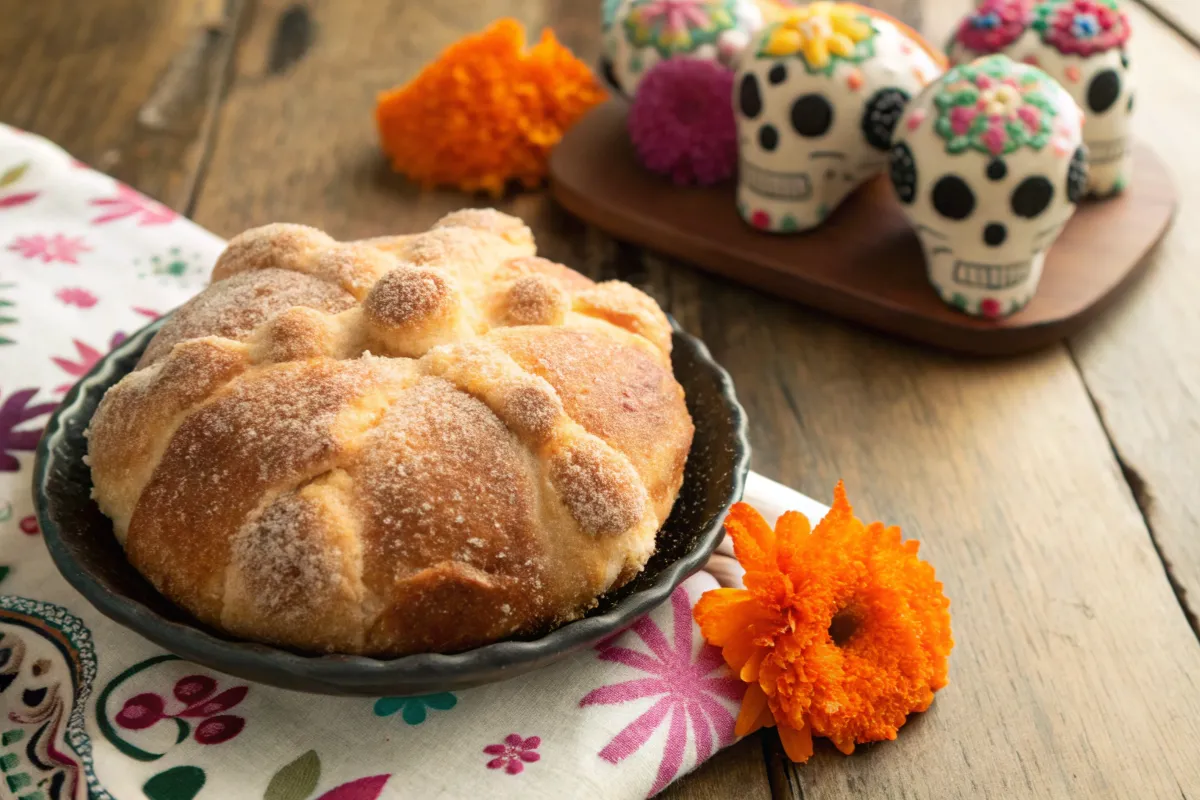
Table of contents
Plan Ahead for Pan de Muertos Success
Because Pan de Muertos is a yeast-based bread, timing matters. You’ll want to plan your prep so the dough rises properly without stress. Here’s how to stay organized:
- Measure ingredients ahead. Have your flour, sugar, yeast, and butter at room temperature.
- Prepare your flavorings. Zest your orange, warm your milk, and measure your anise seeds before you start.
- Set your rising space. A warm, draft-free area will help your dough rise beautifully.
- Make the decorations early. Shape the dough “bones” and top knob ahead of time, then chill them until ready to bake.
If you want to prepare the dough the day before, let it rise once, then refrigerate overnight. The slow fermentation enhances the flavor and gives a deeper aroma.
Pan de Muertos Recipe Card
What Makes This Bread So Special
This recipe for Pan de Muertos is all about balance, the tender, buttery crumb meets the light citrus perfume that makes it irresistible. The dough is enriched with eggs, milk, and butter, giving it a brioche-like texture that stays soft for days. What sets this version apart is the subtle infusion of orange zest and anise, two ingredients that bring authentic depth to its flavor.
Unlike some versions that rely heavily on sugar, this recipe keeps sweetness in check to let the aromatics shine. You can even adapt it to your needs:
- Replace dairy milk with oat or almond milk for a lactose-free version.
- Use coconut oil instead of butter for a lighter texture.
- Add a touch of vanilla or cinnamon for a more fragrant twist.
The dough also freezes well, making it easy to prepare ahead of Día de los Muertos. For those interested in the cultural meaning behind this bread, you can read more about its symbolism in this informative National Geographic article on Día de los Muertos.
What Pan de Muertos Represents
Every part of Pan de Muertos has meaning. The round shape represents the cycle of life and death, the small knob on top symbolizes a skull, and the bone-like strips evoke the path of the soul. Traditionally enjoyed with hot chocolate or atole, this bread turns remembrance into a sweet act of celebration, one that fills homes with both aroma and emotion.
Baker’s Secrets for the Perfect Pan de Muertos
Even experienced bakers can struggle with enriched doughs, so here’s how to ensure your Pan de Muertos turns out perfect every time:
- Warm ingredients slightly. Cold butter or milk can slow yeast activity. Keep everything slightly warm to the touch.
- Don’t rush the kneading. The dough should be elastic and smooth, not sticky. Give it time, about 10 minutes of mixing by hand or with a mixer.
- Proof with patience. This bread takes time to rise. If your kitchen is cool, extend the proofing time rather than increasing heat.
- Handle the decorations gently. When shaping the bone decorations, don’t press them too hard, they should sit lightly on the surface.
- Brush twice for shine. For that glossy, golden finish, brush with melted butter right after baking and dust generously with sugar.
Regional Takes on This Iconic Bread,
1. Pan de Muertos with Orange Blossom Water
This version is my personal favorite. Adding a teaspoon of orange blossom water to the dough or brushing it on after baking creates an incredible floral aroma that lingers in your kitchen for hours. It’s common in central Mexico and pairs perfectly with dark hot chocolate.
2. Chocolate Pan de Muertos
For a modern twist, replace part of the flour with cocoa powder and add dark chocolate chips to the dough. The result is a deeply flavored, slightly bittersweet bread that appeals to both adults and kids. I like to top it with cinnamon sugar for a cozy touch.
3. Pan de Muertos with Sugar Glaze
Instead of dusting the bread with sugar, brush it with a simple syrup made of water, sugar, and a squeeze of lemon. It adds a light sheen and keeps the bread moist for days.
4. Vegan Pan de Muertos
You can still enjoy this bread without butter or eggs. Replace butter with coconut oil and use plant-based milk. For richness, add a touch of vanilla and grated coconut to the dough. The texture remains soft, and the flavor is surprisingly close to the original.
5. Mini Pan de Muertos
Perfect for parties or gifts, shape the dough into small rolls instead of one large loaf. They bake faster, are easier to serve, and look adorable on any ofrenda table.
For another traditional bread variation, check out my Apple Fritter Bread Recipe, which shares similar texture and festive symbolism.
Your Baking Questions Answered
It symbolizes the connection between the living and the dead. The round shape represents the circle of life, while the bone decorations honor loved ones who have passed.
Press it lightly with your finger, if it springs back slowly, it’s ready to bake.
It’s possible using baking powder, but it won’t have the same airy texture. The yeast gives it that tender, fluffy structure.
This usually happens if the dough didn’t rise enough or if the yeast was old. Always check expiration dates and give it enough proofing time.
Bringing Tradition to Your Table
Baking Pan de Muertos is more than making bread, it’s creating a connection between generations. Every rise, every scent of orange and anise, carries meaning. I hope this recipe inspires you to celebrate life, remembrance, and togetherness through your baking.

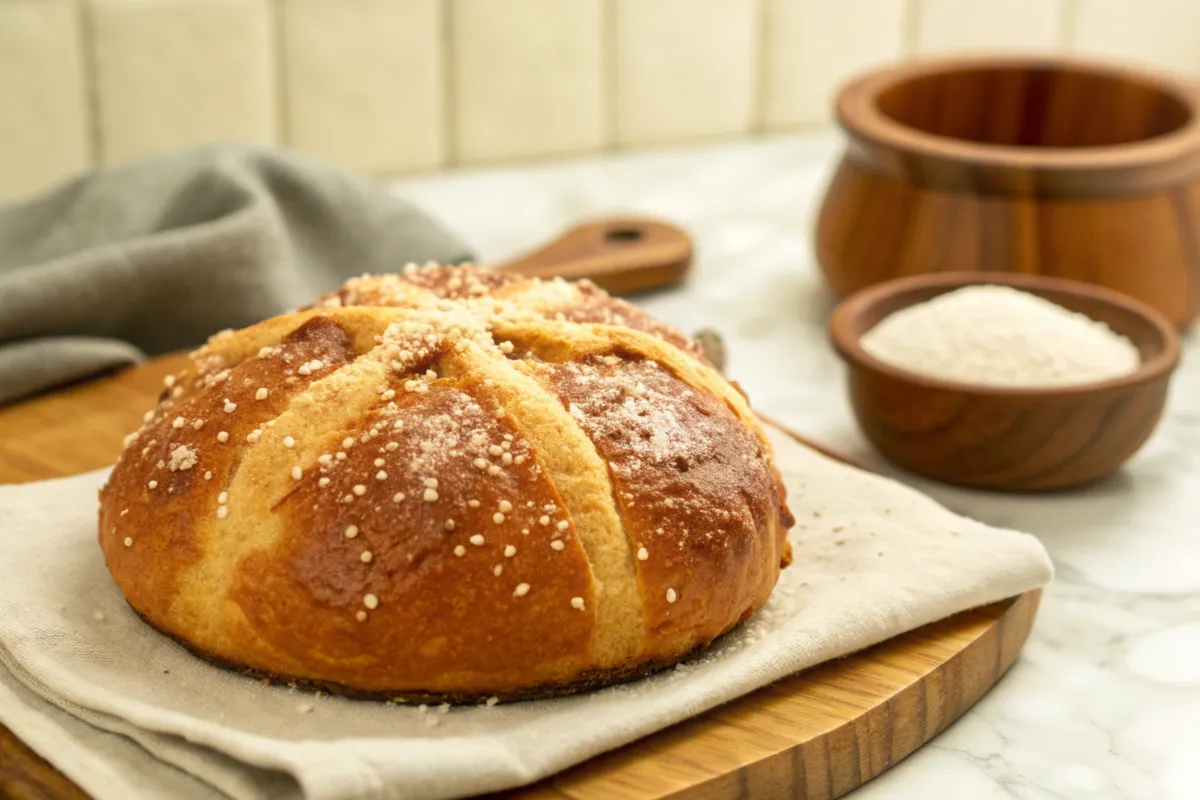
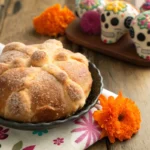


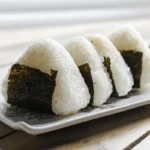



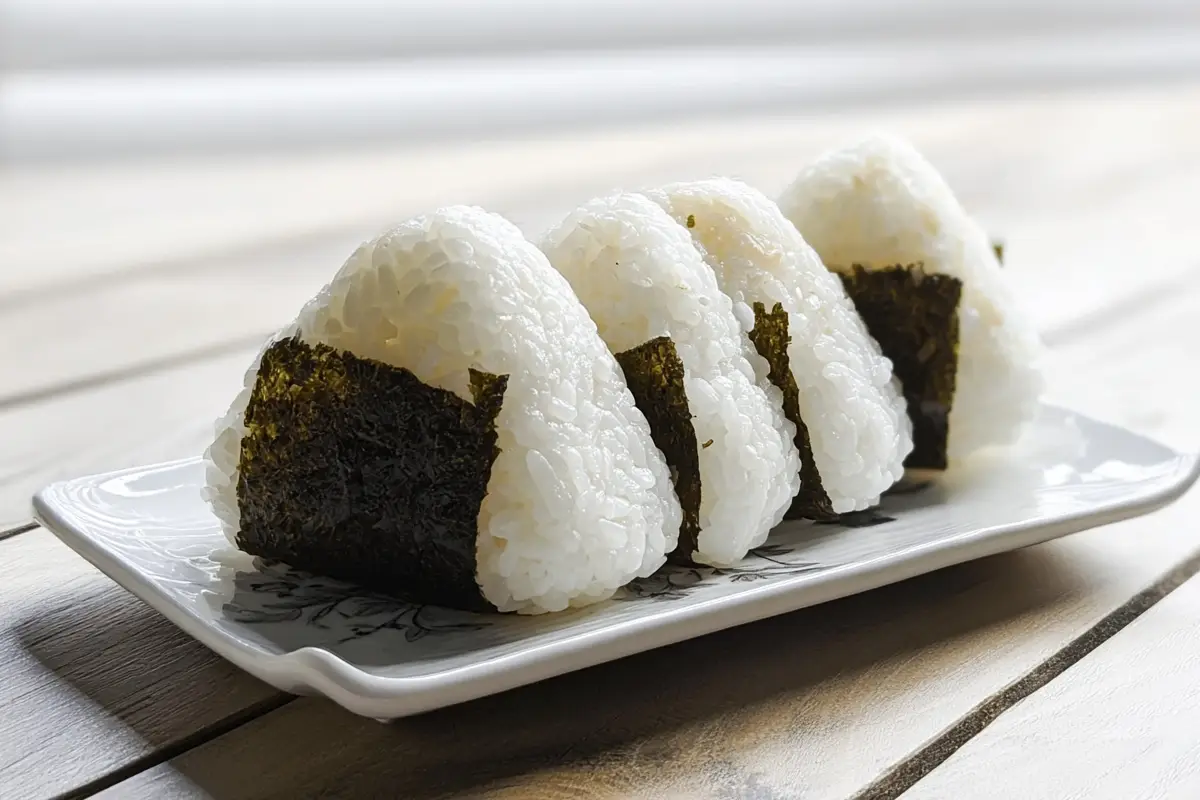
Leave a Reply